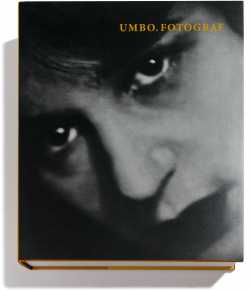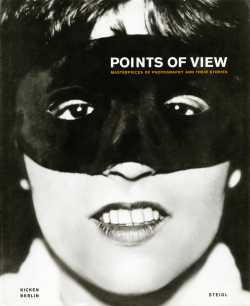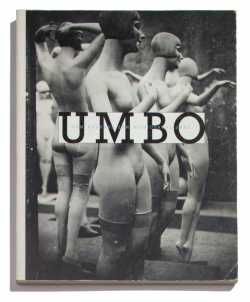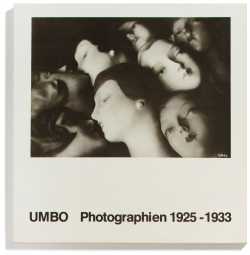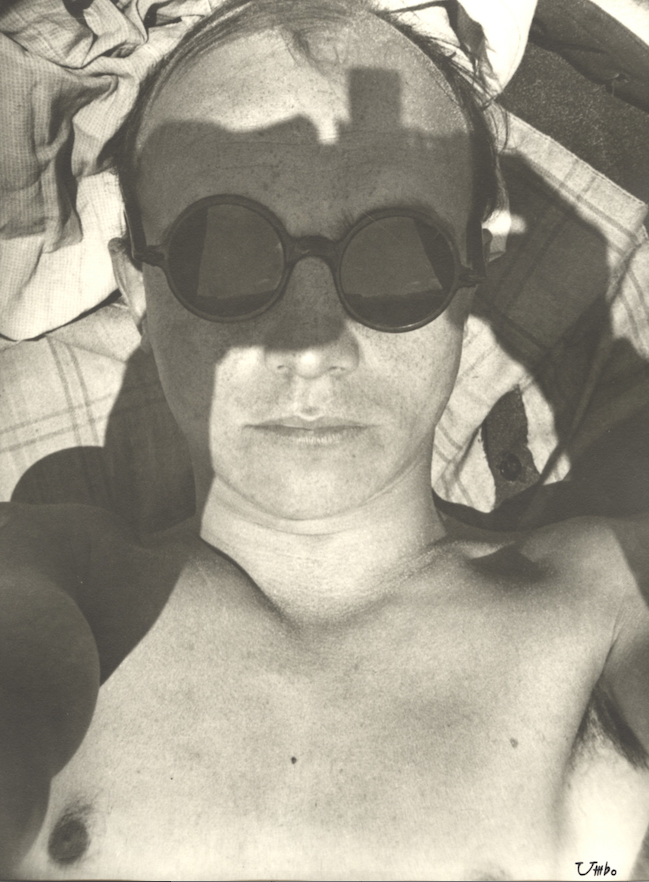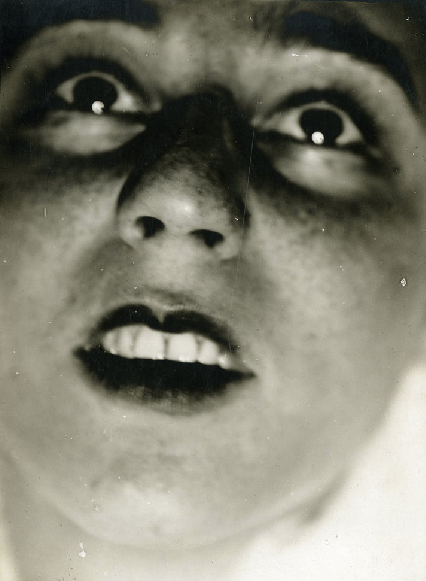UMBO
1902–1980
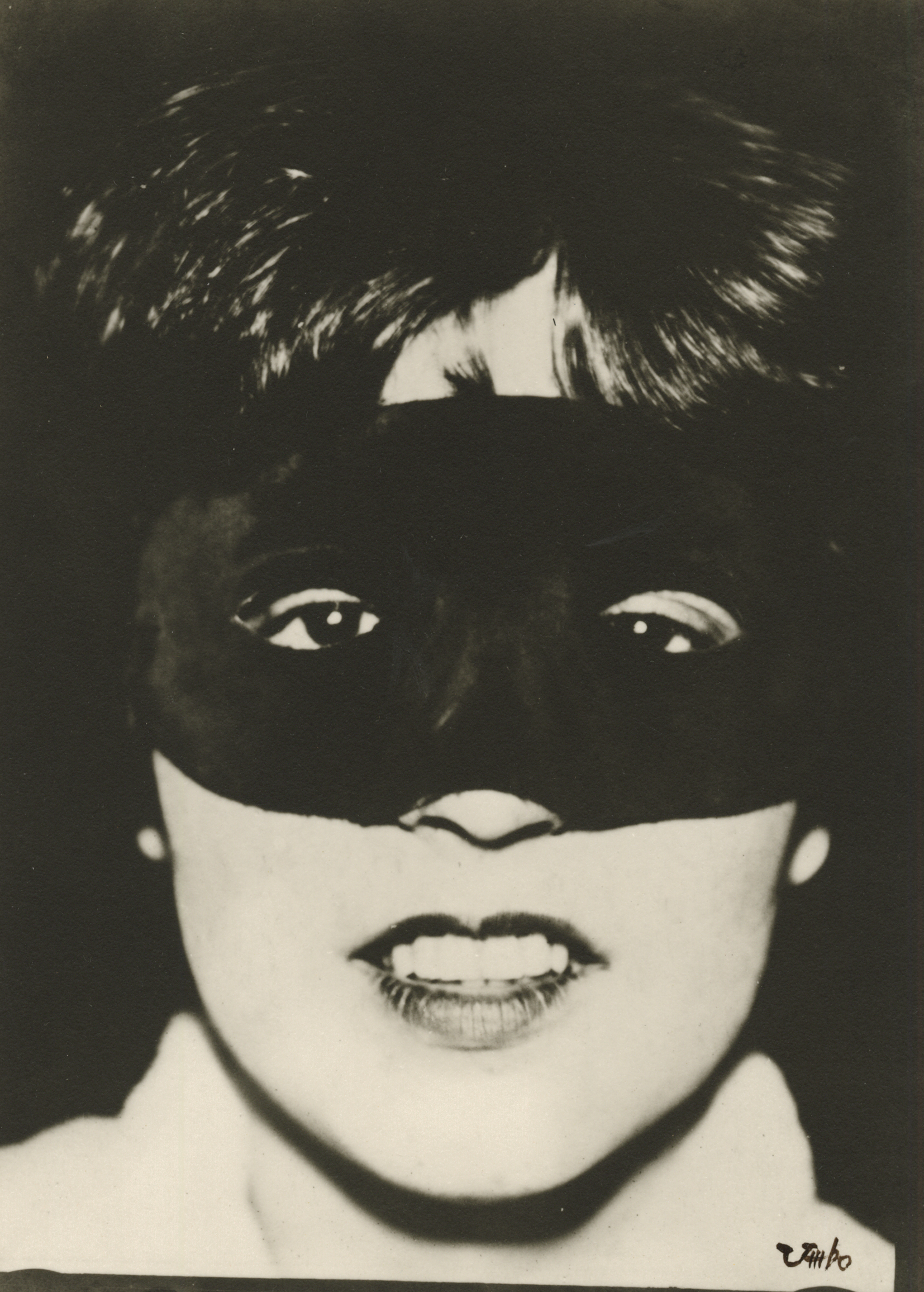
UMBO (OTTO UMBEHR)
Ruth mit Maske / Ruth with Mask, 1927
gelatin silver print, printed 1980
17,7 x 12,8 cm
© Phyllis Umbehr / Galerie Kicken Berlin / VG Bild-Kunst, Bonn 2014
Biography
Umbo (Otto Umbehr, German, 1902-1980) was active in the Wandervogel youth movement before entering the Bauhaus Weimar to study with Johannes Itten and at the metal crafts studio in 1921. He moved to Berlin in 1923 and held a handful of jobs as varied as a house painter, clown, and cinematographer’s assistant. Encouraged by Paul Citroen, he took up photography in 1926 quickly to become one of the most innovative purveyors of avant-garde photography, exhibiting his works at the 1929 Film und Foto exhibition in Stuttgart. In 1928 he co-founded the Dephot photo agency and worked until the 1940s as a press photographer for international magazines. His entire archive was destroyed in a 1943 air raid; from 1945 on he worked for local news publications and as a house photographer for the Kestner society in Hanover. In his later years, Umbo’s work was increasingly overlooked by the public, only to be rediscovered in the 1970s. Rudolf Kicken was among the first to establish contact to Umbo and exhibit his work. The 1980 Umbo portfolio by Galerie Rudolf Kicken collected the most important works by the artist; Kicken was able not only to locate the extant vintage prints by Umbo but also — as he had promised the artist shortly before his death — to maintain his life’s work, together with Umbo’s daughter, in order to give the entire body to a German museum. This goal has now been achieved. Umbo’s artistic estate was acquired jointly by the Stiftung Bauhaus Dessau, Sprengel Museum Hannover, and the Berlinische Galerie, Landesmuseum für Moderne Kunst, Fotografie und Architektur in 2016.
Exhibitions
-
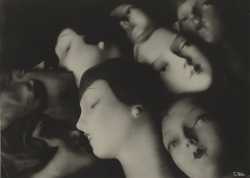 UMBO | revisitedFeb 13 — Aug 28, 2020
UMBO | revisitedFeb 13 — Aug 28, 2020 -
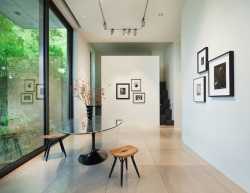 HIGHLIGHTSSep 12, 2018 — Feb 28, 2019
HIGHLIGHTSSep 12, 2018 — Feb 28, 2019 -
 1974… 40 Years. 40 PhotographsSep 20, 2014 — Feb 26, 2015
1974… 40 Years. 40 PhotographsSep 20, 2014 — Feb 26, 2015 -
 Happy Birthday Bauhaus!Jul 21 — Dec 19, 2009
Happy Birthday Bauhaus!Jul 21 — Dec 19, 2009 -
UmboSep 28 — Dec 31, 2000
-
Happy Birthday PhotographyVintage Photographs from 1840–1956Aug 01 — Sep 30, 1989
-
UMBOPhotographien 1927 - 1930Nov 30, 1979 — Jan 18, 1980
Publications
Press
-
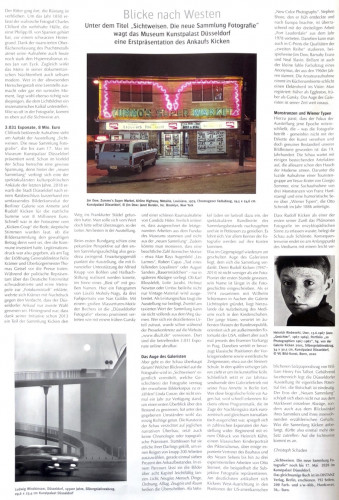
Photonews: Blicke nach Westen
Apr 01, 2020
-
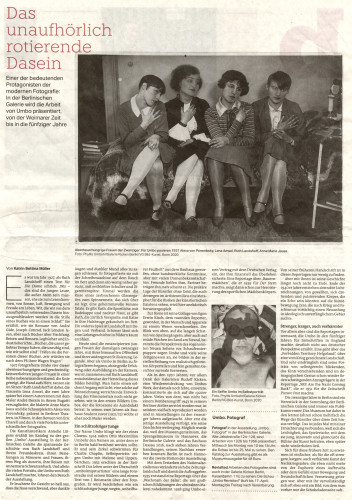
TAZ: Das unaufhörlich rotierende Dasein
Feb 29, 2020
-
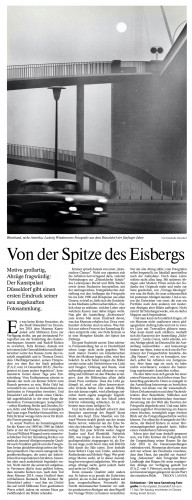
Frankfurter Allgemeine Zeitung: Von der Spitze des Eisbergs
Feb 28, 2020
-
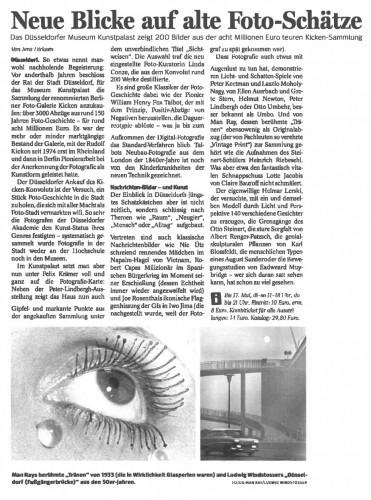
Neue Rhein Zeitung: Neue Blicke auf alte Foto-Schätze
Feb 20, 2020
-
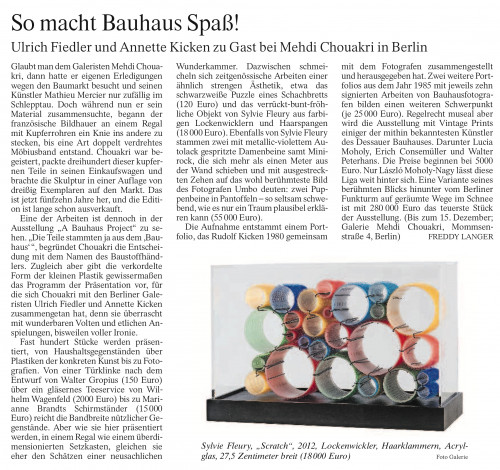
FRANKFURTER ALLGEMEINE ZEITUNG: HAVING FUN WITH BAUHAUS!
Nov 02, 2019
-
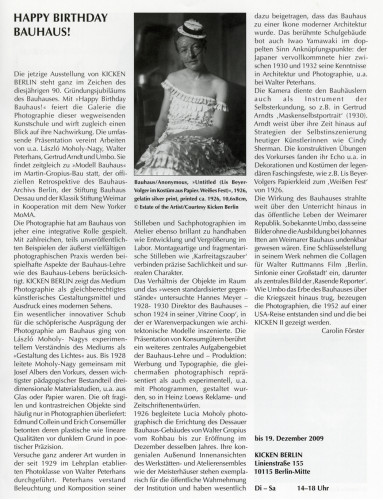
Brennpunkt: Happy Birthday Bauhaus!
Oct 01, 2009
-
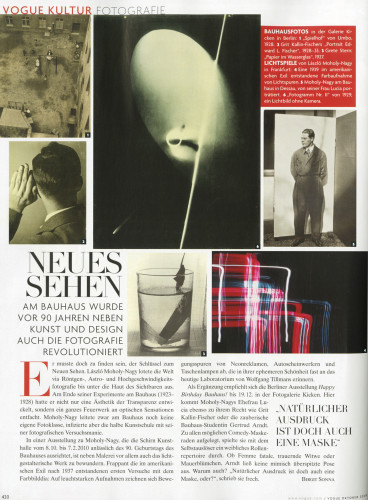
VOGUE: Neues Sehen
Oct 01, 2009
-
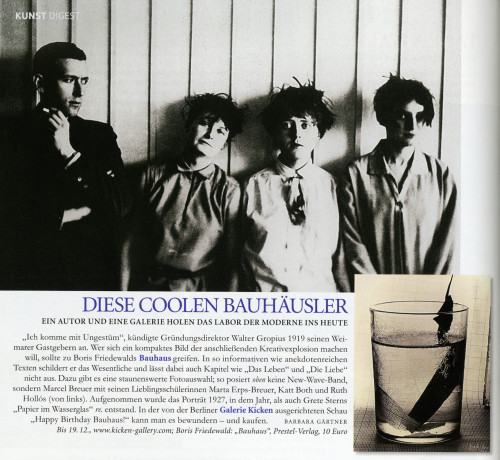
Architectural Digest: Diese coolen Bauhäusler
Sep 01, 2009
-
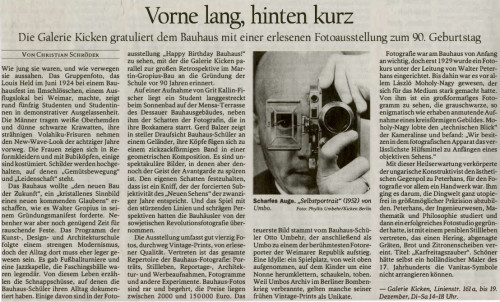
Der Tagesspiegel: Vorne lang, hinten kurz
Aug 15, 2009
-
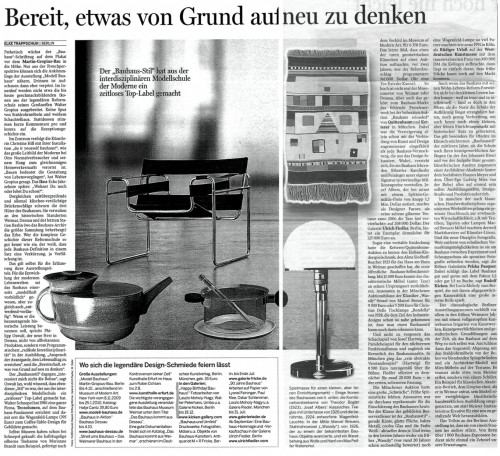
Handelsblatt: Bereit, etwas von Grund auf neu zu denken
Jul 01, 2009
-
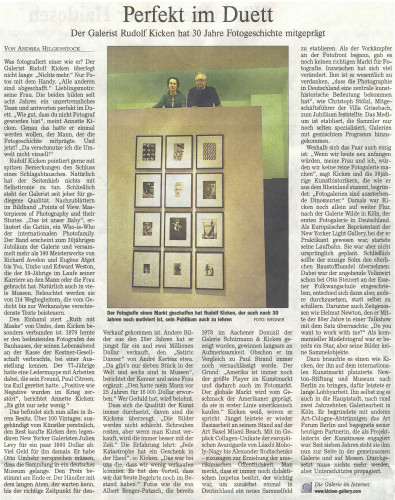
Berliner Morgenpost: Perfekt im Duett
Feb 24, 2007
-
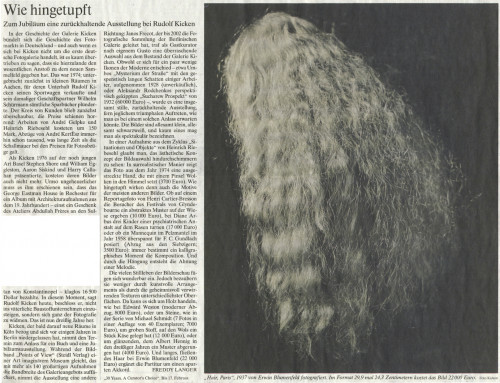
Frankfurter Allgemeine Zeitung: Wie hingetupft
Feb 03, 2007
-
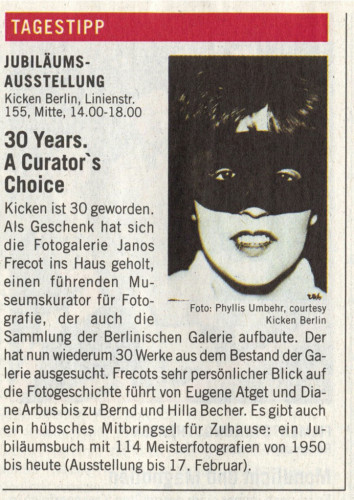
Zitty: Jubiläumsausstellung
Feb 01, 2007
-
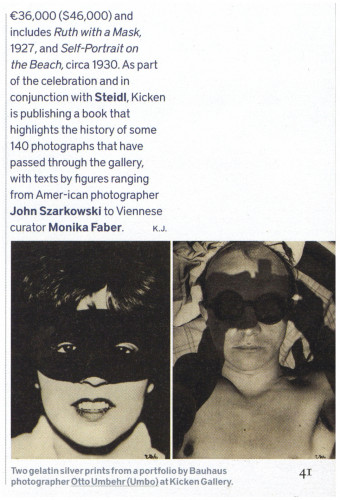
Art + Auction: 30 Years & Points of View
Jan 01, 2007
-
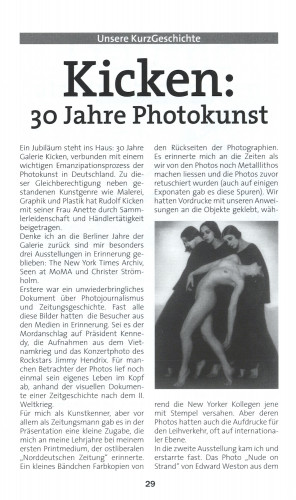
Art Observer: Kicken: 30 Jahre Photokunst
Dec 22, 2006
-
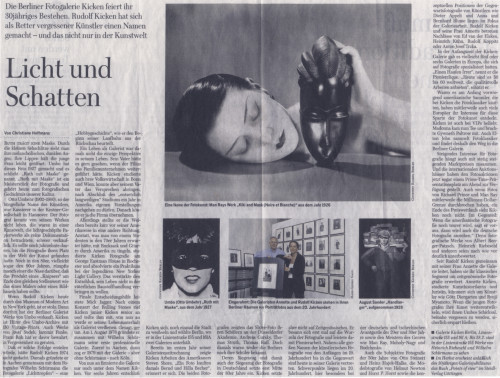
Die Welt: Licht und Schatten
Feb 05, 2006
-
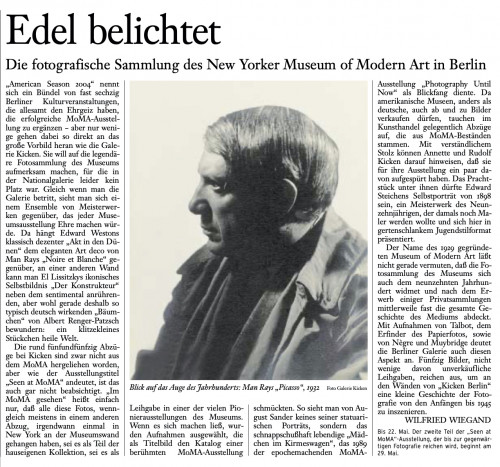
Frankfurter Allgemeine Zeitung: Edel belichtet
May 09, 2004
-
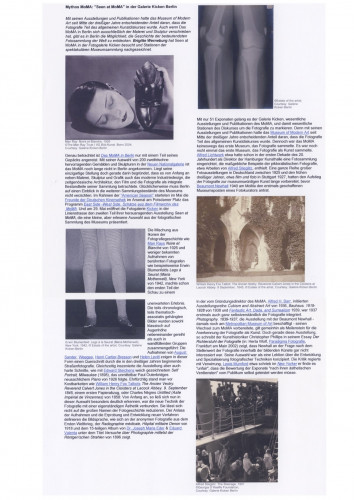
db artmag: Mythos MoMA
May 01, 2004
-
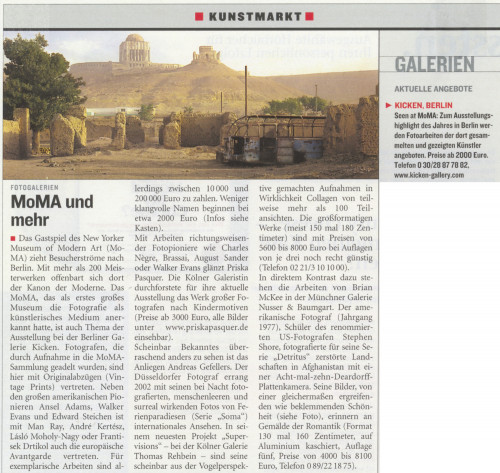
Wirtschaftswoche: MoMA und mehr
Mar 25, 2004
-
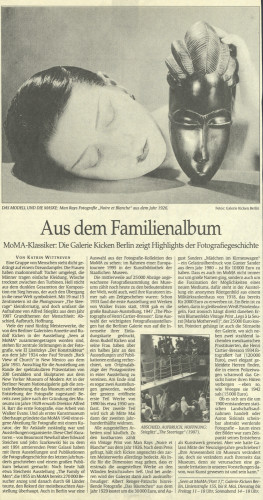
Der Tagesspiegel: Aus dem Familienalbum
Feb 21, 2004
-
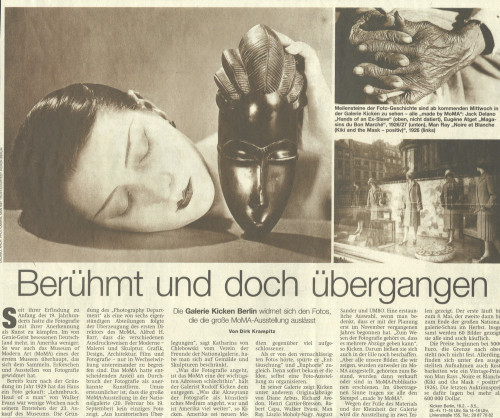
Welt am Sonntag: Berühmt und doch übergangen
Feb 15, 2004
-

tip: Kunst: Sammlung MoMA
Feb 12, 2004
-

Der Tagesspiegel: Schrift im Schnee
Jul 19, 2003
-
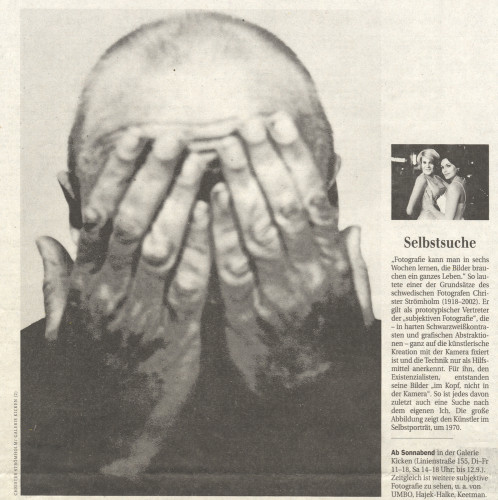
Berliner Zeitung: Selbstsuche
May 28, 2003
-
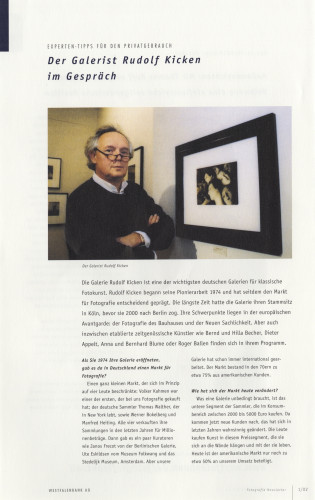
Fotografie Newsletter: Der Galerist Rudolf Kicken im Gespräch
Jan 01, 2002
-
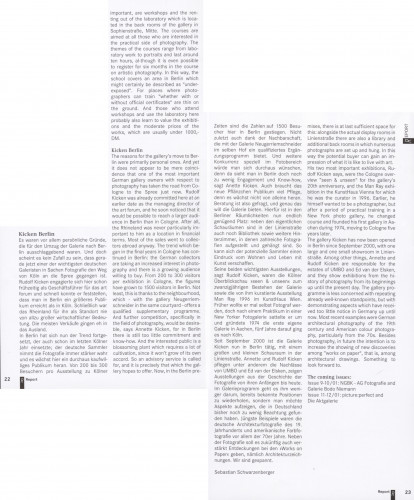
artery Berlin: Kicken Berlin
Jan 01, 2001
-
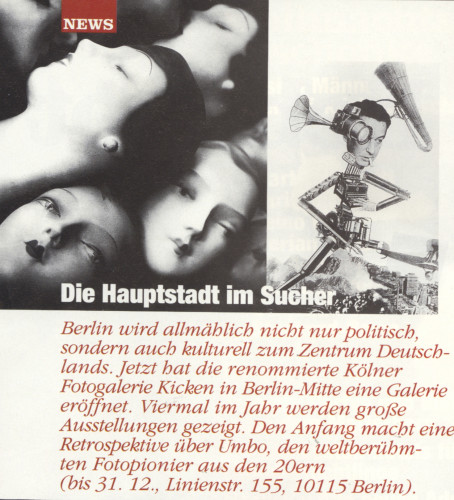
GQ: Die Hauptstadt im Sucher
Dec 01, 2000
-
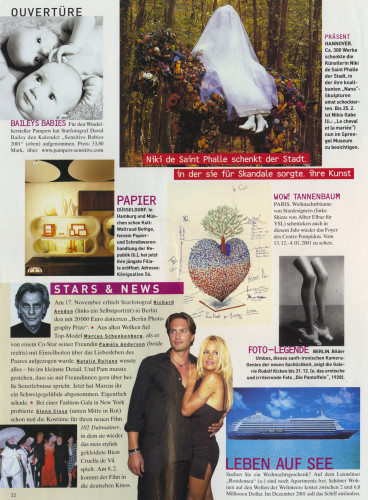
Vogue: Foto-Legende
Dec 01, 2000
-
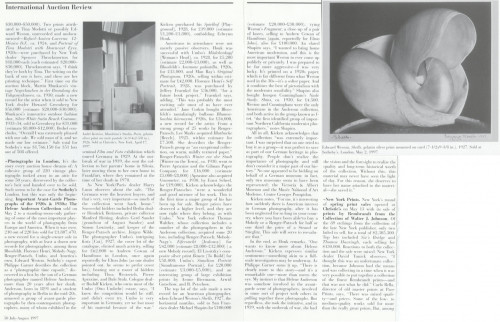
On Paper: International Auction Review
Jul 01, 1997
-
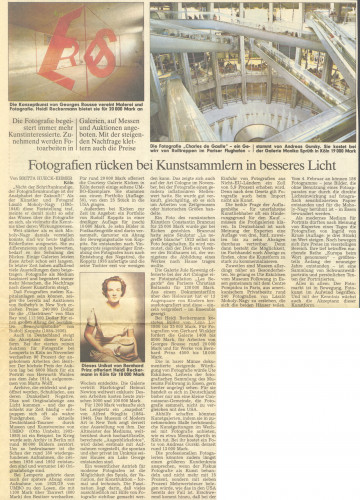
Welt am Sonntag: Fotografien rücken bei Kunstsammlern in besseres Licht
Dec 07, 1996
-
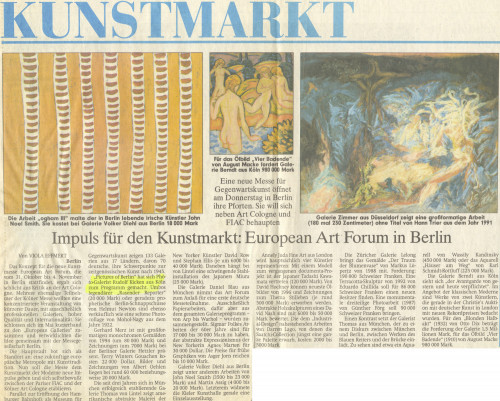
Welt am Sonntag: Impuls für den Kunstmarkt: European Art Forum in Berlin
Oct 27, 1996
-
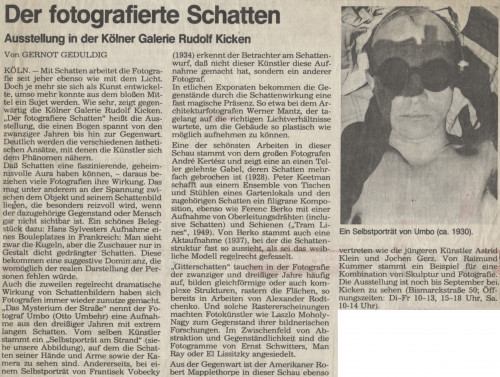
Aachener Nachrichten: Der fotografierte Schatten
Jul 04, 1991
-
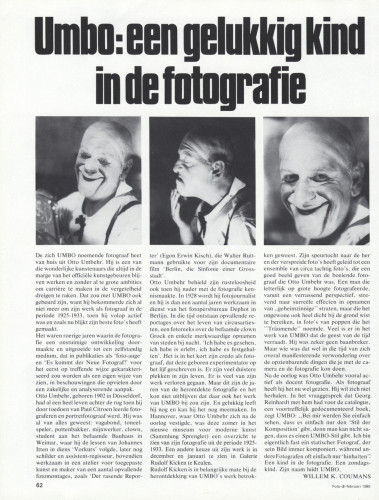
FOTO: Umbo: een gelukkig kind in de fotografie
Feb 02, 1980
-
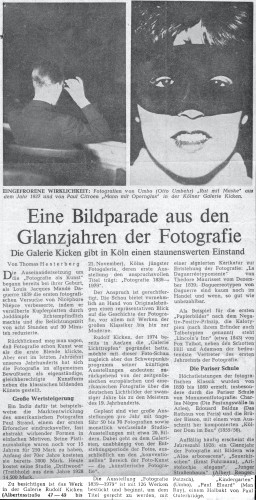
Kölner Stadt-Anzeiger: Eine Bildparade aus den Glanzjahren der Fotografie
Nov 09, 1979
